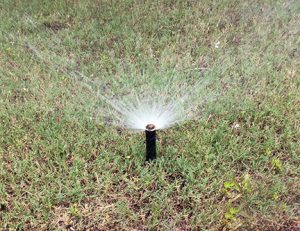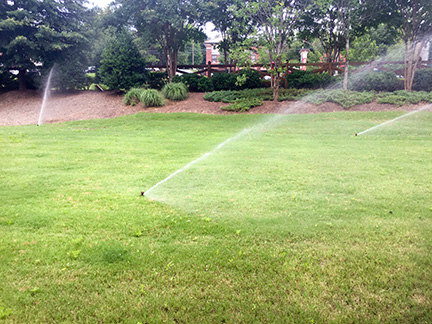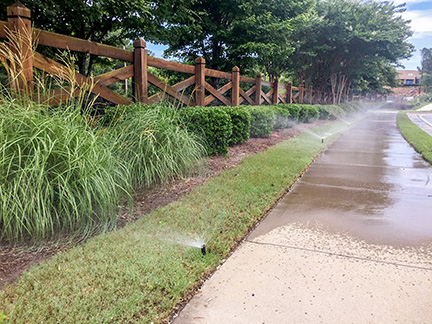Sprinklers 101: Irrigation System Components
By Mark Wolfe
Upgrade Your Landscape
Irrigation is the most important upgrade you can make to your landscape. Whether you do it yourself, or hire a landscape professional to install and maintain your system, it pays huge dividends in time and money savings to understand irrigation before you do the work.
The Water Source
Irrigation water must come from a reliable source. Most residential systems are connected to the same municipal water supply that provides water to the home. Some alternative water sources include rainwater catchment systems, ponds and wells. Most of the alternative water sources require a pump, filter and pressure tank at the front end of the system.
For a city-water connection a meter may be shared with your home or you may be metered separately for irrigation; either way the first component of the irrigation system is a backflow preventer. The backflow preventer keeps water that has entered the irrigation system from being sucked back into the domestic water supply in the event of a shut-off, leak, or other interruption in flow. After the backflow preventer, a pressure regulator should be installed to ensure that the high pressure of the supply doesn’t wear out, or blow out the components
Supply Lines
After entering the system, irrigation water flows through main lines, valves, lateral lines and finally heads or emitters. The supply lines have to be strong enough to handle the amount of water pressure inside them, and have a large enough diameter to deliver a sufficient volume of water. Mainlines are rigid pipe, normally copper and PVC, which is soldered and cemented together. Lateral lines may include flexible pipe which is friction-fitted with barbed connectors.
Water Pressure
Water pressure steadily decreases down the line, and pipe size plays a role in available pressure. Pipe diameter can stay the same or decrease as it gets further away from the source; it must never increase. All of the valves for the zones should be the same size.
The other important factor affecting water pressure is the number of heads on a zone. Each head needs a certain amount of pressure to work properly. Too few heads is not a problem but too many heads on a zone diffuses the water pressure, reducing efficiency.
Valves
Off of the mainline, there are valves that turn each irrigation zone on and off. Valves are connected to the controller, which opens and closes them using an electric solenoid. Wells and water catchment systems require a special kind of valve, called a scrubber valve that accounts for debris in the water that would damage normal valves and clog heads at the point of delivery.
Point Of Delivery
This is where automatic irrigation is customized for specific requirements. There are three common types of delivery: rotors, spray heads, and drip. Rotors and spray heads have nozzles that adjust the distance and / or pattern of the water as it comes out. Drip zones deliver water through emitters which may drip, trickle or spray.
Rotors are best used on large areas of grass, ground covers; and other low-growing, shallow-rooted mass plantings. These rotating heads send out a stream of water from around twenty feet to more than fifty feet. They cover lots of ground, and normally deliver a smaller volume of water per square foot than spray heads.
Spray heads may be used for nearly any landscape application. They deliver water in a fixed pattern that can reach distances up to twenty feet or more. They are useful in open areas, tight spaces, and small or oddly shaped beds.
Drip irrigation is a water saver that puts the water only where it is needed. The flexible supply line will either have emitters pre-installed to drip at set intervals along its length, or it will be solid, allowing customized spacing and sizing of emitters.



Control
The irrigation control panel, or clock, is what makes the difference in time and effort compared with hand watering. At a minimum, it is programmable to make the zones run on a specified schedule (program): you simply input which days to run the program, start time for the program and run time for each zone. Most controller models allow for multiple programs and multiple start times per day on each program. Add a rain sensor to the system for greater efficiency. The newest high-end systems send you email alerts, automatically shut down leaks, allow you to control the system remotely using your mobile device, and more.
Installing a new landscape irrigation system, or getting an existing one into proper working order, will give you the confidence to plant a broader palette of landscape and garden plants while allowing you freedom to pursue interests other than dragging hoses around the yard. Learning about irrigation is time well spent.
Check out worx.com to shop for the perfect tools to keep your lawn perfectly manicured .
You must be logged in to post a comment.